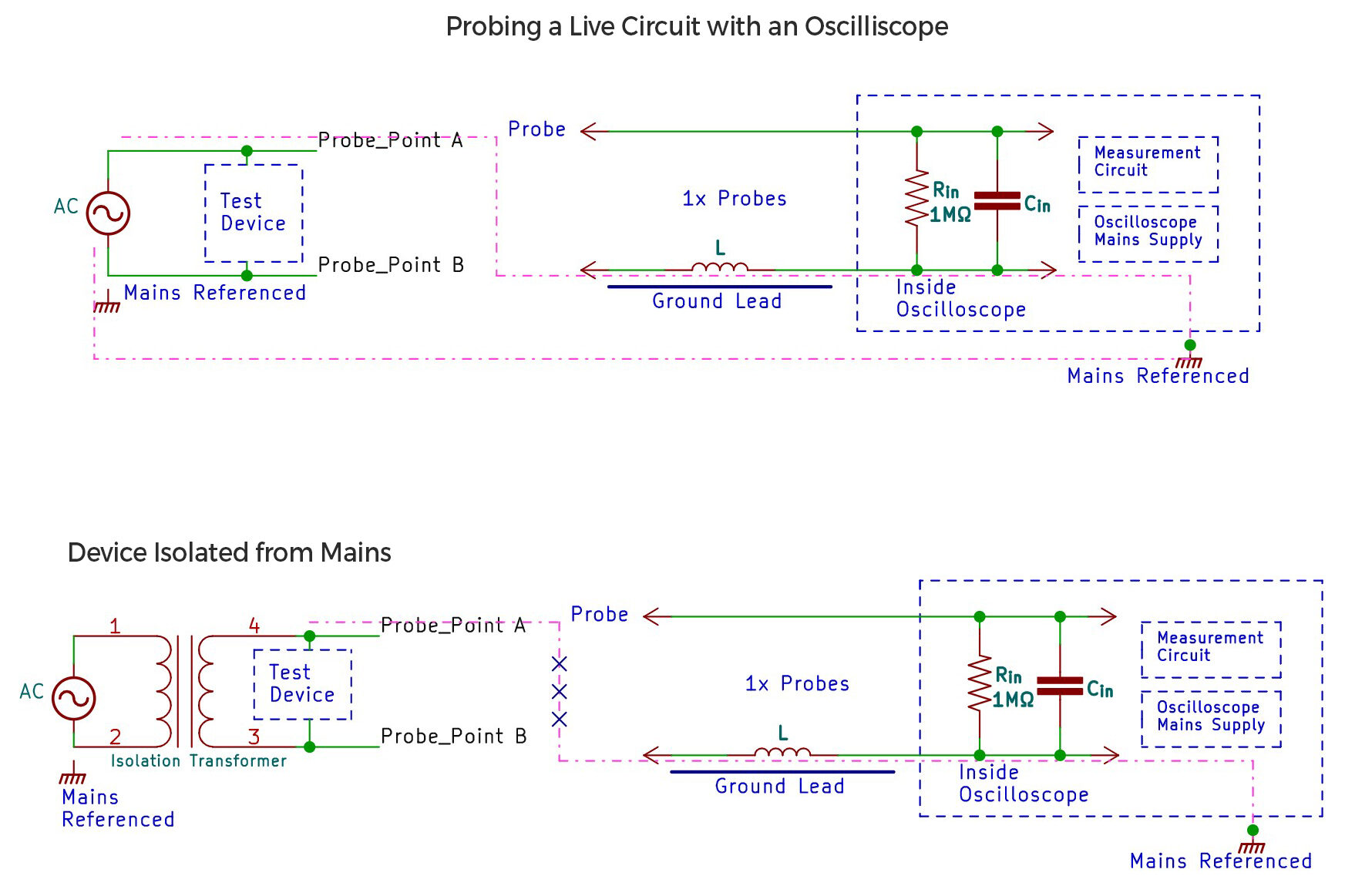
A couple of readers wanted me to cover the aspect of safety of using a scope properly. Let’s discuss that today. The fundamental thing you need to keep in mind for a scope is that the negative lead of a normal scope is always connected to AC mains earth ground(designed like that for safety reasons). This is the main reason why you cannot measure the voltage across say a resistor if it’s not connected to GND. Because negative lead is always “Grounded” it opens up new problems if you are not careful.
Take an example of a circuit you are trying to measure which takes in Mains AC input and is mains earth referenced(3pin plug input). When probing around let’s say you touch the negative scope lead to one of the live sections of the circuit(Probe_Point A in images). You created a dead short with your test circuit and earth through the negative lead of your probe. If you are probing a high-voltage line, it’s enough to blow up the probe or damage the internals of the oscilloscope or even the device under test. So be very careful probing anything with AC mains input and where you connect the negative lead.
How do you safely do it? Use an isolated input transformer which will provide physical isolation hence no current path to the earth. You can also use those small standalone battery-powered oscilloscopes with a built-in screen if you cannot isolate the test device for AC measurements. But try not to use the USB PC-based ones because they may have a path to earth ground via the USB shields of the PC. Else what you can use is what is called a differential probe built specifically for this use case. We will discuss why and how this helps next time.
0 Comments
Comments are closed.